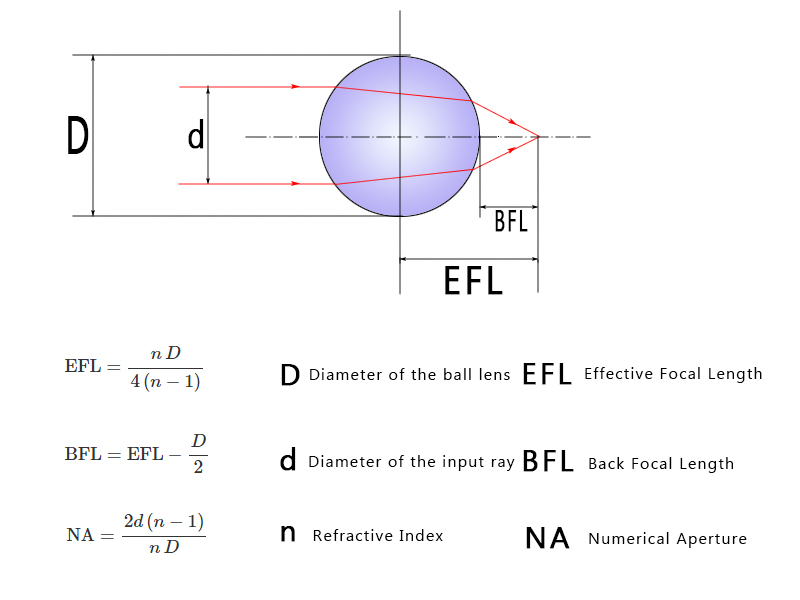$12.00
Specifications:
| Materials | UV Fused Silica | Lens Type | Ball lens |
| Diameters(mm) | 9.0 | Diameter Tolerance (μm) | +/-2.5 |
| Design Wavlength(nm) | 587.6 | EFL (Effective Focal Length) (mm) | 7.96 |
| BFL (Back Focal Length) (mm) | 2.96 | Sphericity (μm) | 2.0 |
| Surface quality | 40/20 S/D | Irregularity(@633nm) | λ/4 |
| Coating | None | Wavelength Range (nm) | 200-2200 |
Ball lenses belong to a special form of biconvex lenses which have the geometry of a ball(sphere). They are manufactured from a single material, usually an optical glass with good transparency in the wavelength region of interest. The typical applications of ball lenses include focusing light in the field of fibers(e.g. laser to fiber coupling ,fiber to fiber coupling), emitters and detectors , majorly to collimate light depending on geometries of the input light source. Also they could be ball pre-forms of aspheric lenses where they are purposefully deformed in order to prevent spherical aberrations.
Half-Ball lenses are variants of ball lenses, obtained by simply cutting the ball lenses in half.Due to ease of mounting brought by the one flat surface,they are ideal for applications where more compact designs are required , such as fiber communication, endoscopy, microscopy, optical pick-up devices, and laser measurement systems.
Hangzhou Shalom EO provides both stocked and custom ball lenses and half ball lenses made from N-BK7, UV fused silica, Sapphire and high index optical glass materials.The specification of custom ball and half ball lenses could be varied upon your request.
Here are some key features of UV Grade Fused Silica:
UV Grade Fused Silica is a synthetic ( manufactured synthetically through the oxidation of high purity silicon by flame hydrolysis) amorphous silicon dioxide consists of extremely pure raw ingredients,with maximum transmission wavelength band from 195 to 2100 nm ,which locates in the ultraviolet region. The low coefficients of thermal expansion contributes to the high thermal stability and resistance to thermal shocks, and the material also features high chemical resistance and minimal fluorescence.It is often a preferred material for precision optics due to its consistent and repeatable optical performance.
